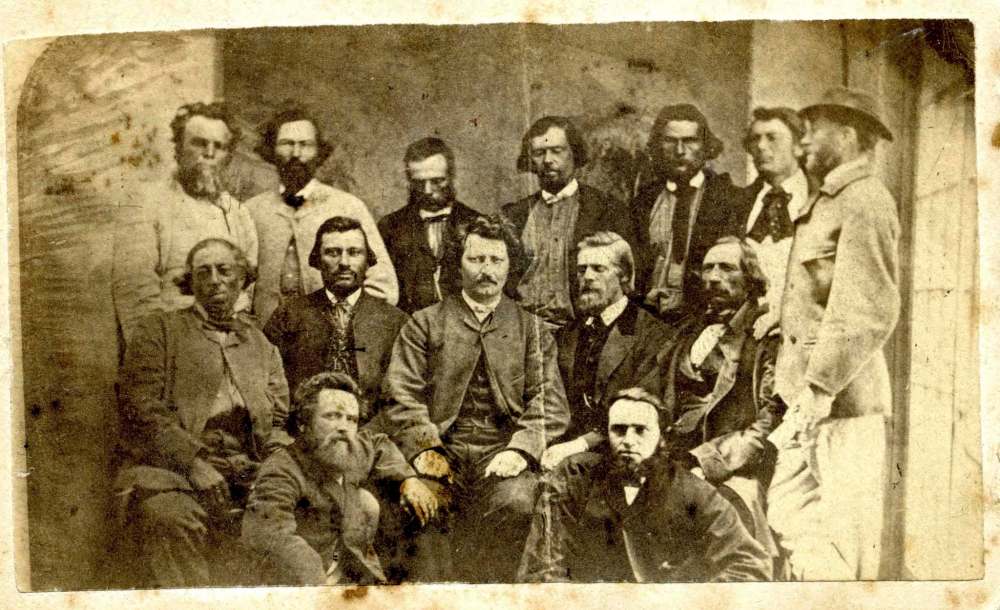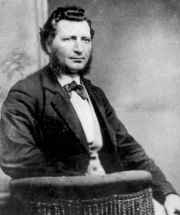Include Riel resistance in 150th celebration
Read this article for free:
or
Already have an account? Log in here »
To continue reading, please subscribe:
Monthly Digital Subscription
$0 for the first 4 weeks*
- Enjoy unlimited reading on winnipegfreepress.com
- Read the E-Edition, our digital replica newspaper
- Access News Break, our award-winning app
- Play interactive puzzles
*No charge for 4 weeks then price increases to the regular rate of $19.00 plus GST every four weeks. Offer available to new and qualified returning subscribers only. Cancel any time.
Monthly Digital Subscription
$4.75/week*
- Enjoy unlimited reading on winnipegfreepress.com
- Read the E-Edition, our digital replica newspaper
- Access News Break, our award-winning app
- Play interactive puzzles
*Billed as $19 plus GST every four weeks. Cancel any time.
To continue reading, please subscribe:
Add Free Press access to your Brandon Sun subscription for only an additional
$1 for the first 4 weeks*
*Your next subscription payment will increase by $1.00 and you will be charged $16.99 plus GST for four weeks. After four weeks, your payment will increase to $23.99 plus GST every four weeks.
Read unlimited articles for free today:
or
Already have an account? Log in here »
Hey there, time traveller!
This article was published 02/01/2020 (2168 days ago), so information in it may no longer be current.
Manitobans will have much to celebrate and reflect on when the province marks its 150th anniversary in 2020. There’s probably no better way to do that than to learn more about how Manitoba became a province in 1870.
It’s a remarkable story, one many are probably not fully aware of, beyond the broad strokes of how the Métis — and their leader Louis Riel — negotiated Manitoba’s terms of entry into Confederation. It is one of the most important chapters in Canadian history, but it’s one that got lost in time for a period. Only in recent decades has it been resurrected, finding its way into the classroom curriculum and given the attention it deserves in history books.

Still, it is not a well-known story. It is not celebrated the way it should be. What’s left of the original stone gates of Upper Fort Garry at the corner of Broadway and Main Street – where Riel and his provisional government established their headquarters – was nearly forgotten. It stood hidden for years behind a Petro Canada gas station. The area was finally turned into a provincial park in 2015.
Not even the halls of the Manitoba legislature – adorned with countless plaques and images of provincial history – include a description of the Red River Resistance and the events that led to the adoption of the Manitoba Act.
Meanwhile, Manitoba 150, the group coordinating this year’s celebratory events, makes no mention of Riel or the resistance on its website, or in any of the news releases it has issued to date.
Manitoba has a unique opportunity to change that this year. It could use the anniversary as a vehicle to tell the full story of the Red River Resistance – the struggles and fears that drove it and the hopes and dreams many had for a better life by joining Canada.
Red River's Métis stood firm against Canada's presumptuous PM 150 years ago

Posted:
As Manitoba gets set to mark its 150th anniversary in 2020, the Free Press turns back the clock and takes an in-depth look at the dramatic story of how a small community living on the banks of the Red and Assiniboine rivers stood up to the federal government and demanded a say in the terms of joining Canada. The Red River Resistance of 1869-70 is a story of courage and determination by a group of Manitoba Métis who challenged a colonial mindset in Ottawa and took up arms to protect their democratic, cultural and legal rights.
It’s a complex story. It began when the federal government negotiated the purchase of Rupert’s Land from the Hudson’s Bay Company in early 1869. Ottawa’s plan was to annex the territory unilaterally, without consulting local inhabitants. It was to be a Canadian territory governed by a lieutenant-governor and a federally appointed council, with provincial status coming later.
That plan backfired when the French Métis, using armed force, prevented lieutenant-governor designate William McDougall from entering the territory. In a brazen move, Riel and the Métis took Upper Fort Garry and instituted a form of martial law, all the while trying to find solidarity with their English-speaking Metis counterparts (and others living in what is now Winnipeg and the surrounding area) to negotiate with Ottawa. There were internal struggles, including infighting among the French Métis, armed standoffs, arbitrary imprisonments, and constant conflict between the Métis and Canadian “loyalists” living in Red River.
Surprisingly, there was very little bloodshed. The execution of Thomas Scott on March 4, 1870 by the provisional government was an exception.
In the end, the government of then-prime minister John A. Macdonald agreed to negotiate with a delegation of Red River settlers sent to Ottawa. Democratic, linguistic and land rights were won. Riel’s insistence on immediate provincial status was secured. The Manitoba Act received royal assent by Parliament on May 12, 1870.
There are many more stories within this story. The aftermath of Manitoba’s entry into Canada was messy and imperfect. But this is how Manitoba became a province. It was a victory for the democratic rights of future Manitobans. In 2020, Manitoba should celebrate that legacy.








